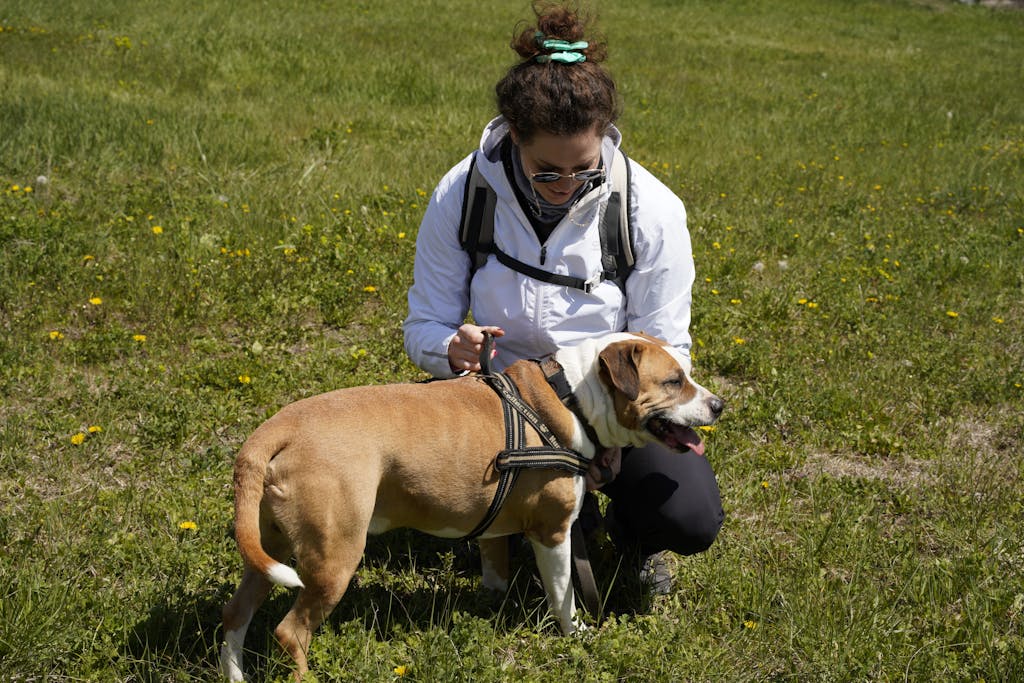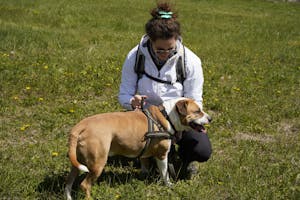Introduction: A Healthy Dog is a Happy Dog
Our dogs are more than just pets—they are family, friends, protectors, and companions who rely on us for their well-being. While dogs give us unconditional love, it’s our responsibility to ensure they live long, joyful, and healthy lives. Wellness isn’t just about avoiding illness—it’s about building daily habits that enrich your dog’s body and mind.
Whether you have a playful puppy, an energetic adult dog, or a gentle senior companion, wellness care shapes their quality of life and deepens the bond you share.
Why Wellness Is More Than Just Vet Visits
The Foundation of Good Health
Proper wellness starts long before a medical issue arises. It’s built through consistent routines: balanced nutrition, daily exercise, mental stimulation, and emotional connection. These small efforts prevent larger health issues down the road and ensure your dog feels secure and loved every day.
Preventive Care Is Key
Annual checkups, vaccinations, dental cleanings, and parasite prevention play a crucial role in keeping your dog healthy. Early detection of health problems often leads to easier, more effective treatment—and potentially saves lives.
Essential Elements of Dog Wellness
1. Balanced Nutrition
A well-balanced diet fuels your dog’s body and mind. Choose high-quality dog food appropriate for your dog’s size, breed, and life stage. Avoid fillers, excessive grains, and artificial additives. Fresh water should always be available.
Consider consulting your vet about supplements, especially for joint health, skin condition, and digestive support.
2. Regular Exercise
Exercise prevents obesity, builds muscle, improves cardiovascular health, and reduces behavioral problems. Different breeds have different needs—while a Border Collie might require hours of play and mental challenges, a senior Shih Tzu may only need gentle daily strolls.
Creative exercise ideas:
- Agility courses
- Fetch and frisbee games
- Hiking and swimming
- Interactive toys for mental stimulation
3. Mental Health and Enrichment
Boredom leads to anxiety and destructive behavior. Keep your dog mentally engaged with puzzle toys, scent work, training games, and regular changes in their walking routes. A mentally stimulated dog is a calm and content dog.
4. Grooming and Hygiene
Routine grooming keeps your dog comfortable and prevents health issues. Regular brushing, nail trimming, ear cleaning, and dental care are all essential. Certain breeds have specific grooming needs that should never be overlooked.
Signs Your Dog is Thriving
- Bright, clear eyes
- Healthy coat and skin
- Playful, energetic demeanor
- Steady appetite and normal digestion
- Calm behavior and restful sleep
- Strong, steady movement without signs of pain
Understanding the Stages of Dog Wellness
Puppy Wellness (0-1 Year)
- Frequent vet visits for vaccinations
- Socialization with people and other animals
- Basic obedience training to build lifelong habits
- Introduction to grooming routines
Adult Wellness (1-7 Years)
- Maintaining a healthy weight
- Regular exercise and mental challenges
- Continued preventive health care and check-ups
- Monitoring dental health and potential allergies
Senior Wellness (7+ Years)
- More frequent health screenings
- Adjusted exercise for aging joints
- Special diets for senior needs
- Extra comfort through orthopedic beds and warm environments
Emotional Wellness: The Heart of a Happy Dog
Building Routine and Security
Dogs thrive on predictability. Set feeding times, regular walks, and bedtime routines create a sense of safety and structure that reduces anxiety.
The Power of Positive Reinforcement
Training through kindness builds trust and strengthens your bond. Harsh punishments damage confidence; praise, treats, and affection encourage cooperation and joy.
Time Together Matters Most
Beyond exercise and feeding, your dog craves quality time—whether it’s shared adventures or quiet moments on the couch. Attention and affection are essential to their well-being.
Common Mistakes to Avoid in Dog Wellness
- Skipping annual vet visits
- Overfeeding or under-exercising
- Neglecting dental hygiene
- Using outdated or harsh training methods
- Ignoring behavioral changes that signal health problems
Conclusion: Wellness is a Lifelong Commitment
Dog wellness isn’t a checklist—it’s a lifestyle. From nutritious meals to playful outings and routine vet care, every choice you make influences your dog’s health and happiness. Your commitment rewards you with years of joyful companionship, wagging tails, and unconditional love.
Wellness is about more than just living—it’s about thriving together.
Key Takeaways for Dog Owners
- Balanced nutrition, regular vet care, and daily exercise are non-negotiable.
- Mental enrichment and emotional connection are just as important as physical health.
- Pay attention to life stage changes and adjust care routines accordingly.
- A happy, healthy dog leads to a happier, more fulfilled home.






